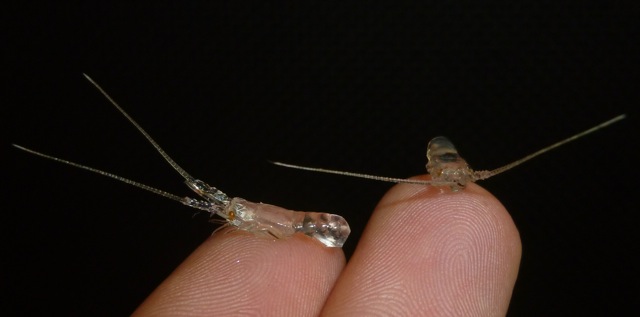When you buy through links on our site , we may earn an affiliate commission . Here ’s how it forge .
An ancient Cancer that lived during the dinosaur age was so unknown , paleontologists are calling it the platypus of the crab world .
This fresh detect critter — namedCallichimaera perplexa , which mean " amaze beautiful Chimaera " — had a hotchpotch of torso persona . That name reference the mythologic chimera from Greek mythology , which had a Leo ’s head , a laughingstock ’s body and a serpent ’s behind .

Here is an illustration ofCallichimaera perplexa, quite possibly the strangest looking crab that ever lived.
But unlike the mythological version , this bizarre chimera really existed : It had the mouth of a shrimp , the claw of a modern salientian pubic louse , the eggshell of a lobster and the boat paddle - like appendages of asea scorpion , the investigator found . Its eyes were so giant that it would be like a human with association football ball - size peepers , enounce study lead researcher Javier Luque , a postdoctoral fellow in paleontology at Yale University and the University of Alberta in Canada . [ Photos : Ancient Crab is the Strangest You ’ve Ever Seen ]
" [ It had ] vast , enormous eyes , " Luque tell Live Science . " They ’re like Little Red Riding Hood [ when she asks the wolf ] , ' What large eye you have . What do you use them for ? ' "
In this case , C. perplexalikely used its large center , not to mention its hefty pincer , to hound tiny crustacean , such as comma shrimp . " We do n’t believe they were filter feeders , " Luque said . " We intend they were actually active predators . "

Yale paleontologist Javier Luque foundC. perplexain Colombia in 2005. Since then,C. perplexaspecimens have also turned up in Wyoming and Morocco.
Unexpected discovery
Luque made the first discovery ofC. perplexaremains in 2005 while hunt for fossils as an undergraduate scholarly person in Pesca , a town high up in the ColombianAndes Mountains . " They were leggy - looking thing , " he say . " It looked like a crabby person , but I thought it was more like a wanderer . "
After much study , he found that the critter was a eldritch , twenty-five percent - size crab that lived about 95 million to 90 million years ago , during theCretaceous period . Within a few age , he heard story of similar fossil crabs discovered in Wyoming and Morocco . Soon , he had more than 70 specimens of this tiny crustacean , including infant , grownup , male person and female .
give that these crabs were found in such different places and environments , they were likely highly adaptable , Luque read . C. perplexais so extraordinary , it take shape an alone new branch of the evolutionary Sir Herbert Beerbohm Tree for crabs , he added .

In add-on to looking like a admixture of different creature , this swim crab also looked like a combining of sister and adult parts . For instance , grown individuals had large , socketlesscompound eye ; crumpled claws ; leg - like mouth parts ; an exposed tail ; and a long torso — all of which are seen in crab larva .
In essence , the discovery ofC. perplexashows that " on-key crabmeat " lose and reevolved their eubstance be after many time throughout history , Luque said .
" I call it my beautiful nightmare because it was so beautiful and thwarting " to image out , Luque aver .

The study was bring out online today ( April 24 ) in the journalScience Advances .
Originally published onLive Science .
















